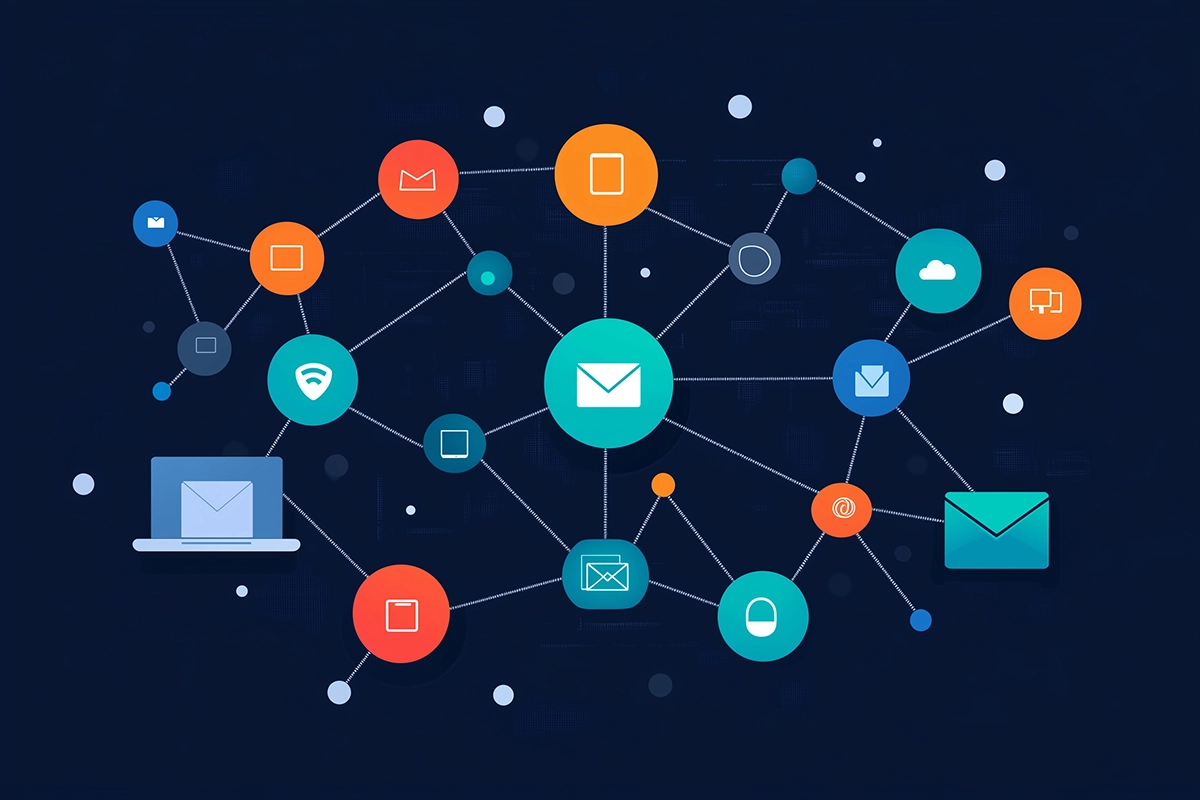Inbound Marketing vs. Content Marketing: Unveiling Key Differences and Synergies
Related Terms
B2B ContentAs the digital landscape evolves, strategies like inbound marketing and content marketing have become focal points for businesses aiming to bolster their online presence. While the two often intertwine, they possess distinct approaches, aims, and applications.
Key Differences:
Focus and Scope:
Content Marketing: Primarily concentrates on creating and distributing valuable, relevant content to attract and engage an audience.
Inbound Marketing: Encompasses a broader strategy that involves leveraging various tactics, including content marketing, SEO, social media, and more, to attract, convert, close, and delight customers.
Objectives:
Content Marketing: Aims to create and distribute compelling content that resonates with the audience's needs, ultimately driving profitable action.
Inbound Marketing: Focuses on attracting prospects and leads through a range of techniques, nurturing them through the buyer's journey, ultimately converting them into loyal customers.
Strategy Implementation:
Content Marketing: Revolves around storytelling, engaging visuals, and informative materials to connect with the audience.
Inbound Marketing: Involves a more comprehensive strategy that uses various marketing tactics like SEO, email marketing, content, and social media to attract and engage prospects at different stages of the buyer's journey.
Conversion vs. Relationship-Building:
Content Marketing: Primarily emphasizes on converting prospects into customers by offering valuable content.
Inbound Marketing: Focuses not only on conversions but also on building long-term relationships by providing relevant, helpful information throughout the customer's journey.
Measurement and Analytics:
Content Marketing: Often measures success by metrics like engagement rates, shares, and conversions directly related to content.
Inbound Marketing: Takes a broader approach, measuring success based on a variety of marketing activities, customer acquisition costs, customer lifetime value, and more.
Advantages and Best Practices:
Advantages of Inbound Marketing vs. Content Marketing:
Inbound Marketing: Offers a holistic approach that covers the entire customer journey, fostering long-term relationships.
Content Marketing: Focuses specifically on content creation and distribution, driving direct conversions through compelling materials.
Instances for Inbound Marketing over Content Marketing:
When a business requires a more comprehensive strategy that involves lead nurturing, customer engagement, and relationship-building throughout the buyer's journey.
Instances for Content Marketing over Inbound Marketing:
When a business aims for direct and immediate conversions through engaging and persuasive content.
Summary:
Content Marketing (under 250 words):
Content marketing revolves around the creation and distribution of valuable, relevant, and consistent content to attract and retain a clearly defined audience. By crafting compelling materials such as articles, videos, infographics, and more, businesses aim to drive profitable customer action, offering informative and engaging content that resonates with the audience’s interests and needs.
Inbound Marketing (under 250 words):
Inbound marketing is a comprehensive strategy that involves attracting, engaging, and delighting prospects and customers throughout their buyer's journey. It utilizes various tactics like content marketing, SEO, social media, and email marketing to not only attract leads but also to convert them into loyal customers by providing relevant and helpful information at each stage of the customer lifecycle.
Synergistic Use of Content and Inbound Marketing:
Content marketing and inbound marketing are inherently interlinked. For instance, a content piece created for the awareness stage (top of the funnel) can be leveraged in an inbound strategy by promoting it via social media to attract potential leads. Subsequently, as the audience moves through the funnel, more targeted content aligning with their journey stage can be used, ensuring a seamless transition and a higher likelihood of conversion. Additionally, content created for inbound marketing can be repurposed across various channels, amplifying its reach and impact. For instance, an informative blog post (content marketing) optimized for SEO can be a pivotal asset in attracting organic traffic, a core component of inbound strategies.
In conclusion, while content marketing focuses on the creation and distribution of compelling materials, inbound marketing encompasses a more comprehensive strategy that integrates various marketing tactics to attract, engage, and delight customers at different stages of their journey. Both strategies, when used together strategically, create a powerful synergy, enabling businesses to attract, engage, and retain their audience effectively.
Content Services
Case Studies
126% Increase in non-brand position 1 rankings
90% increase in CTR
1900% increase in non-branded clicks
Blog Posts

How to Use Internal Linking to Boost SEO, Rankings & Page Authority
Internal linking in SEO is more than just connecting pages—it’s a powerful strategy to improve rankings, enhance user experience, and distribute page authority. In this guide, we break down internal linking best practices, anchor text strategies, and tips to optimize your site’s structure for better search performance. Start linking smarter today.

From Audio to Audience: Boost Your Podcast Pages with SEO Best Practices
Have a lively podcast? Now, is that stellar content findable via organic search? Learn how to unlock the insights from your podcast episodes and make them work more for you in search.

How to Solve Soft 404s Without Losing Your Mind (or Traffic)
Recently, our SEO team was faced with an unusual case of dozens of incorrect soft 404s on a client’s Shopify site. Find out the methods our Technical SEO experts used to fix this mysterious issue and what we recommend if you’re having a similar problem.



